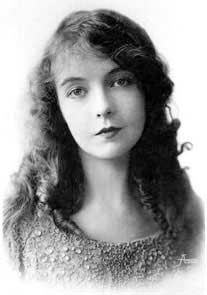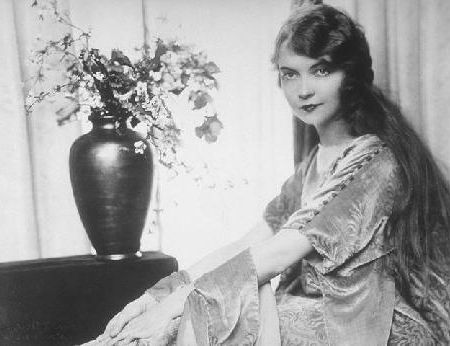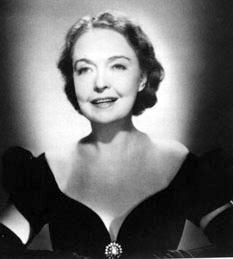 | "The First Lady of the Silent Screen," Lillian Gish was the movie industry's first true actress. A pioneer of fundamental film performing techniques, she was the first star to recognize the many crucial differences between acting for the stage and acting for the screen, and while her contemporaries painted their performances in broad, dramatic strokes, Gish delivered finely etched, nuanced turns carrying a stunning emotional impact. |
While by no means the biggest or most popular actress of the silent era, she was the most gifted, her seeming waiflike frailty masking unparalleled reserves of physical and spiritual strength. More than any other early star, she fought to earn film recognition as a true art form, and her achievements remain the standard against which those of all other actors are measured.
Born Lillian de Guiche October 14, 1893, in Springfield, OH, Gish, her younger sister, Dorothy, and their mother, actress Mary Gish, soon relocated to New York. Beginning their acting careers not long after, the girls were in short time the family breadwinners. Among their colleagues was another child actress, Mary Pickford, who in 1909 traveled west to Hollywood to pursue a career in the movies. She found work with the famed director D.W. Griffith, and soon persuaded him to recruit the Gish sisters for his Biograph Studios' repertory company of actors. Lillian and Dorothy debuted together in 1912's An Unseen Enemy and over the next several years appeared both together and independently in dozens of the director's one- and two-reelers. While overshadowed by Pickford's fame, Lillian was the Griffith stable's most skilled actress, and she starred in many of his greatest works, including 1915's The Birth of a Nation, 1916's Intolerance, 1920's Way Down East and 1922's Orphans of the Storm.

With her delicate, luminous beauty, Gish was perfect for Griffith's Victorian-styled melodramas; wide-eyed and restrained, her face a marvel of innocence and nuance, she was nothing less than ideal for Griffith's landmark use of close-up photography. Together, they worked from opposite sides of the camera to push the new medium from lowbrow entertainment into the realm of serious art. In 1920, under Griffith's tutelage, Gish even directed her own film, Remodeling Her Husband, a vehicle for her sister.
She left Griffith in 1923, landing at MGM to star in such literary projects as 1926's La Boheme and The Scarlet Letter. In 1930, she made her first sound film, One Romantic Night. Longing to return to Broadway -- and considered a fading star around Hollywood -- she made only one film over the course of the next 13 years, 1933's His Double Life. Instead, she became a fixture of the stage in productions, including 1930's Uncle Vanya, 1936's The Old Maid, and 1937's The Star Wagon. She also played Ophelia opposite John Gielgud's titular Hamlet, and in 1932 published the book -Life and Lillian Gish.
A supporting role in 1943's The Commandos Strike at Dawn signalled Gish's return to film. Four years later, she received her first Oscar nomination for her work in the acclaimed Duel in the Sun. However, after 1948's Portrait of Jennie, Gish again exited Hollywood for the stage, and did not return to movies prior to 1955's The Cobweb. Later that same year, she also co-starred in Charles Laughton's classic The Night of the Hunter and infrequently appeared on television. After 1967's The Comedians, Gish largely retired from acting, penning a second memoir, -The Movies, Mr. Griffith and Me, two years later. In 1971, she won a special Academy Award for her "superlative artistry" and in 1977 co-starred in Robert Altman's A Wedding. After being honored in 1984 by the American Film Institute, in 1987, she accepted her final starring role, opposite Bette Davis, in The Whales of August.

Lillian Gish died in New York City on February 27, 1993. Jason Ankeny, All Movie Guide

































